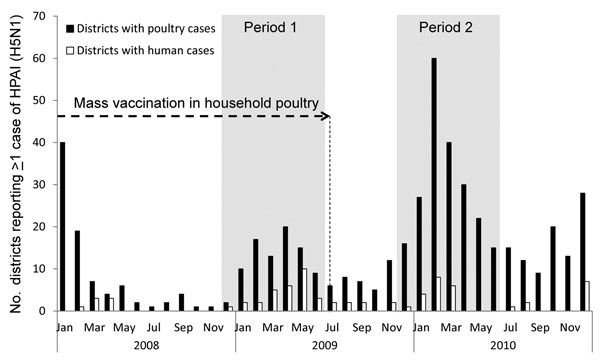Volume 18, Number 12—December 2012
Dispatch
Avian Influenza Vaccination of Poultry and Passive Case Reporting, Egypt
Figure

Figure. . Number of districts in which avian influenza (H5N1) virus infection was detected among poultry and humans during and after a campaign of mass vaccination of backyard poultry, Egypt, January 2008–December 2010. Activity was identified by active, passive, or participatory surveillance at the district level. Cessation of the vaccination campaign appeared to cause a large increase in the number of infected districts that were detected during Period 2. Shading indicates periods of study. HPAI, highly pathogenic avian influenza.
Page created: November 21, 2012
Page updated: November 21, 2012
Page reviewed: November 21, 2012
The conclusions, findings, and opinions expressed by authors contributing to this journal do not necessarily reflect the official position of the U.S. Department of Health and Human Services, the Public Health Service, the Centers for Disease Control and Prevention, or the authors' affiliated institutions. Use of trade names is for identification only and does not imply endorsement by any of the groups named above.